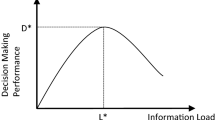Abstract
In order to improve the level of human resource management in modern enterprises, a human resource management method in modern enterprises based on organizational behavior theory and hidden Markov algorithm is proposed. First of all, according to characteristics of human resources training, human resources are analyzed from the aspects of psychological capital and incentive theory in the organizational behavior theory to maximize the advantages of human resources, which is of great significance. Secondly, targeted at data partitioning and unknown model quantities in discovery process of the hidden model, the hidden Markov algorithm using Dirichlet process and non-parametric bayesian factors are analyzed for data flow partitioning of human resource management in modern enterprises and model discovery; with psychological capital and incentive theory in organizational behavior theory as the starting point, role of organizational behavior theory in human resources training is explored in this Thesis.
Similar content being viewed by others
References
Zhang, Y., Tian, Z.: Analysis of influence of profits on employees and enterprises based on the reform of the concept of human resource management of SMEs. In: International Conference on Education, Management and Social Science (2014)
Junni, P., Sarala, R.M., Liu, Y., et al.: The role of human resource and organizational factors in ambidexterity. Acad. Manag. Annu. Meet. Proc. 1, 10372–10372 (2015)
Yong-Jie, L.I.: Human resource management design on social responsibility in the insurance enterprises. J. Guangxi Univ, Natl (2014)
Clark, S.: Organizational behavior and human resource management practices: a comparison between the United States and Brazil based on Hofstede’s cultural framework (2014)
Triki, D., Mayrhofer, U.: Do initial characteristics influence IJV longevity? Evidence from the Mediterranean region. Int. Bus. Rev. 25(4), 795–805 (2016)
Ireland, V., Gorod, A.: Contribution of complex systems to entrepreneurship. Entrep. Res. J. 6(1), 1–41 (2016)
Bartels, F.L., Koria, R.: Mapping, measuring and managing African national systems of innovation for policy and development: the case of the Ghana national system of innovation. Afr. J. Sci. Technol. Innov. Dev. 6(5), 383–400 (2014)
Peláezleón, J.D., Garcíasolarte, M.: Corporate social responsibility and human resource management: a strategic relationship applied based on an explanatory model. Entramado 10(2), 90–111 (2014)
Zhai, M., Qi, Y.: Incentives and its role in modern human resource management. In: International Conference on Management Science and Management Innovation (2014)
Arik, M., Dunne, T.C.: Resource-based perspective of education: a multi-level analysis of the value of creating human capital. J. Appl. Manag. Entrep. 19(4), 3–23 (2014)
Javidnia, M.: The role of electronic management on human resource effectiveness from professionals ‘ point of view: a case of Mazandaran University of medical science. Iran. Int. J. Res. Org. Behav. Hum. Resour. Manag. 2(1), 191–221 (2014)
Su, X.: Research on the new pattern and applications of incentive control mechanism on enterprise human resource management. In: Conference on Informatization in Education, Management and Business (2015)
Tyagi, R.: CSR bequeath competitive advantage: a relative study of indian firms. Soc. Sci. Electron. Publ. 3(3), 49–69 (2014)
Wu, S.Q., Xiao, J.: Organizational justice as mediator of the discretionary human resource practice-organizational citizenship behavior relationship: evidence from enterprises in China. J Hum. Res. Sustain. Stud. 02(4), 173–181 (2014)
Yang, B., Mei, Z.: Employee suzhi in Chinese organizations: organizational ownership behavior. J. Chin. Hum. Res. Manag. 5(2), 144–157 (2014)
Author information
Authors and Affiliations
Corresponding author
Rights and permissions
About this article
Cite this article
Hu, L. A resource management method based on organizational behavior theory and hidden Markov algorithm. Cluster Comput 22 (Suppl 2), 4941–4948 (2019). https://doi.org/10.1007/s10586-018-2445-z
Received:
Revised:
Accepted:
Published:
Issue Date:
DOI: https://doi.org/10.1007/s10586-018-2445-z




